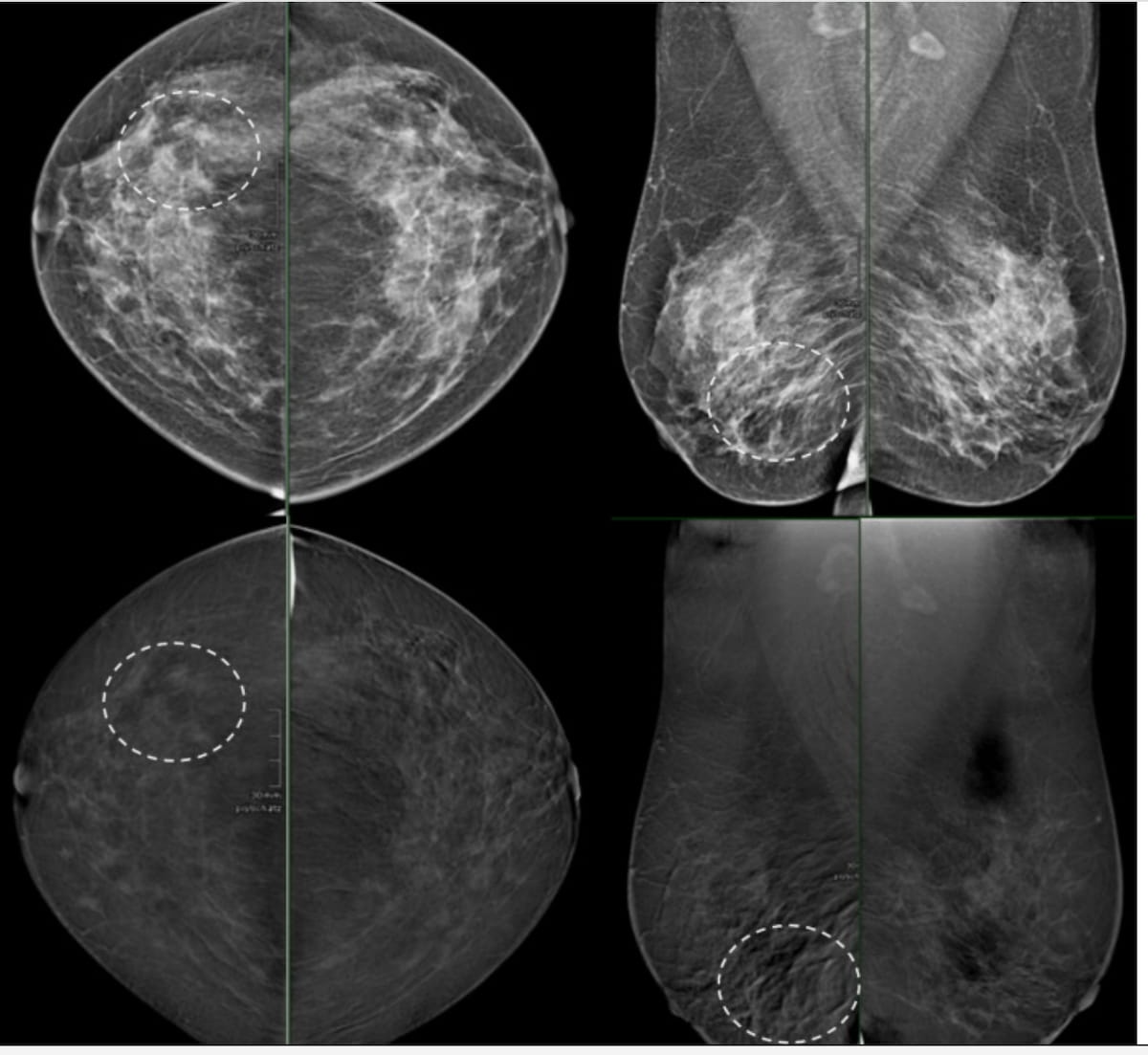Moderate or marked background parenchymal enhancement (BPE) on contrast-enhanced mammography (CEM) resulted in significantly reduced sensitivity, specificity, and area under the receiver operating characteristic curve (AUC), according to newly published research.
For the retrospective study, recently published in the European Journal of Radiology, researchers reviewed CEM data for 229 women (mean age of 53.8), who had prior mammography or breast ultrasound that were inconclusive or suspicious for breast lesions.
The study authors found that CEM had a 90.9 percent sensitivity for breast cancer detection in cases involving minimal/mild BPE versus 66.7 percent sensitivity in cases with moderate/marked BPE.
Minimal/mild BPE on CEM was also associated with a 4.8 percent higher specificity (96.2 percent vs. 91.4 percent) and a 12 percent higher area under the receiver operating characteristic curve (AUC) (94 percent vs. 82 percent) in comparison to moderate/marked BPE.
“Our study emphasizes the significant impact of BPE on the diagnostic performance of CEM. While CEM demonstrates high diagnostic performance with minimal to mild BPE, its performance decreases significantly with moderate to marked BPE,” wrote lead study author Sonja Bechyna, M.D., who is affiliated with the Department of Biomedical Imaging and Imaging-Guided Therapy at the Medical University of Vienna in Vienna, Austria, and colleagues.
The researchers noted that moderate/marked BPE was over 16 percent more prevalent for pre-menopausal women in comparison to post-menopausal women (26.1 percent vs. 9.9 percent). Moderate/marked BPE was present on CEM for over 20 percent of patients with BI-RADS categories C and D for breast density, and in 16.9 percent of patients with BI-RADS 4 and 5 assessments, according to the study authors.
The timing with CEM could help mitigate challenges with BPE.
“ … Optimizing the timing of CEM in the pre-menopausal age-group undergoing elective examinations to the second week of the menstrual cycle, when BPE is thought to be at its lowest, could potentially improve diagnostic performance,” suggested Bechyna and colleagues.
Three Key Takeaways
1. Impact of BPE on diagnostic performance. Moderate or marked background parenchymal enhancement (BPE) significantly reduces the sensitivity (66.7 percent vs. 90.9 percent), specificity (91.4 percent vs. 96.2 percent), and AUC (82 percent vs. 94 percent) of contrast-enhanced mammography (CEM) for breast cancer detection compared to minimal/mild BPE.
2. Patient demographics and BPE. Moderate/marked BPE is more common in pre-menopausal women (26.1 percent) than in post-menopausal women (9.9 percent) and is also associated with higher breast density (BI-RADS C/D) and suspicious findings (BI-RADS 4/5).
3. Timing and follow-up strategies. Scheduling CEM during the second week of the menstrual cycle in pre-menopausal women may reduce BPE and improve diagnostic accuracy. In cases with moderate/marked BPE, BI-RADS III classification with 6-month follow-up or use of additional imaging like multiparametric MRI may be warranted.
While lamenting the lack of guidelines specific to addressing moderate/marked BPE on CEM, the researchers emphasized appropriate and timely follow-up imaging.
“In such cases, classification as BI-RADS III could justify a 6-month follow-up to minimize false-negative findings and better monitor the impact of BPE. Alternatively, the use of additional imaging modalities, such as dedicated multiparametric MRI, may be beneficial in cases of moderate or marked BPE where additional sequences provide further diagnostic information,” added Bechyna and colleagues.
(Editor’s note: For related content, see “Does Timing of Imaging Affect Interpretation of Contrast-Enhanced Mammography?,” “How Does Hormonal Regulation Impact Background Parenchymal Enhancement on Contrast-Enhanced Mammography?” and “ECR Mammography Study: Pre-Op CEM Detects 34 Percent More Multifocal Masses than Mammography.”)
Beyond the inherent limitations of a single-center retrospective study, the authors acknowledged the small size of subgroups with moderate or marked BPE. They also conceded the potential for misclassification bias due to estimations of menopausal status based on age and noted that their emphasis on region-based assessment may hamper comparison with other BPE studies utilizing per-patient or per-breast level assessments.
